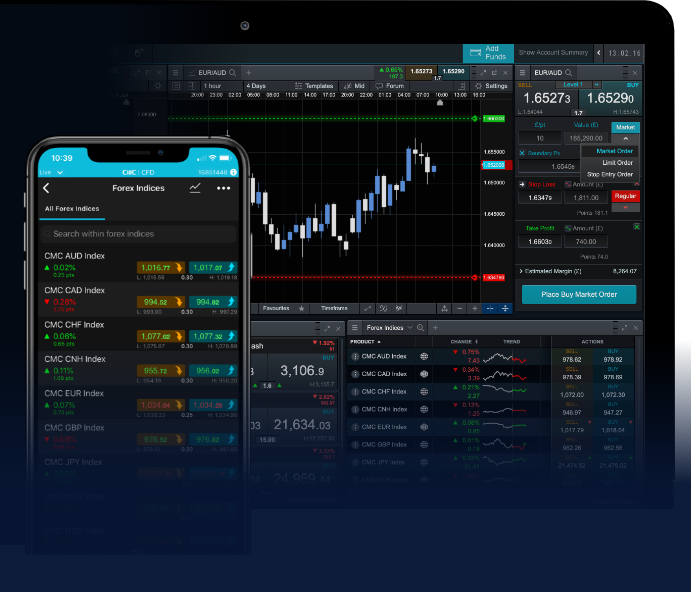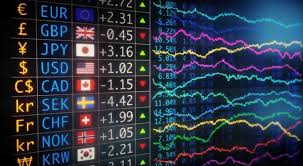
In the world of best indicators for forex trading Trading Platform VN forex trading, having a reliable set of indicators can significantly enhance your trading success. The foreign exchange market is highly dynamic and influenced by numerous factors, making it essential for traders to have effective tools for decision-making. This article will delve into some of the best indicators for forex trading and how they can be utilized to make informed trading choices.
1. Moving Averages
Moving averages (MAs) are among the most popular and widely used indicators in forex trading. They help traders identify the direction of the trend by smoothing out price data over a specific period. The two most common types are the Simple Moving Average (SMA) and the Exponential Moving Average (EMA).
SMA calculates the average price over a given number of periods, while EMA gives more weight to recent prices, making it more responsive to new information. Traders often use moving averages to identify support and resistance levels, as well as to generate buy and sell signals based on crossovers.
2. Relative Strength Index (RSI)
The Relative Strength Index (RSI) is a momentum oscillator that measures the speed and change of price movements. It ranges from 0 to 100 and is typically used to identify overbought or oversold conditions in a market. An RSI above 70 may indicate that a currency pair is overbought, while an RSI below 30 suggests it is oversold.
Traders often use the RSI alongside other indicators to confirm their trading signals. For instance, if the RSI indicates an overbought condition and a candlestick pattern shows a potential reversal, traders might consider selling.
3. Bollinger Bands
Bollinger Bands consist of a middle band (the SMA) and two outer bands that are plotted a certain number of standard deviations away from the SMA. This indicator is useful for identifying volatility and potential price reversals.

When the price approaches the upper Bollinger Band, it may indicate that the currency pair is overbought, while a price near the lower band may signal that it is oversold. Traders can use these signals to make buy or sell decisions, or they can look for other confirming indicators before acting on these signals.
4. MACD (Moving Average Convergence Divergence)
The MACD is a trend-following momentum indicator that shows the relationship between two moving averages of a security’s price. It consists of two lines: the MACD line and the signal line. The MACD line is calculated by subtracting the 26-period EMA from the 12-period EMA, while the signal line is the 9-period EMA of the MACD line.
Traders analyze the MACD for potential buy or sell signals based on crossovers. When the MACD line crosses above the signal line, it may be a buy signal, and when it crosses below, it could indicate a sell signal. Additionally, histogram bars of the MACD can show the strength of the current trend.
5. Stochastic Oscillator
The Stochastic Oscillator is another momentum indicator that compares a currency pair’s closing price to its price range over a specific period. It ranges from 0 to 100. Typically, a Stochastic value above 80 is considered overbought, and below 20 is oversold.
Traders often look for divergences between the Stochastic Oscillator and price action to identify potential trend reversals. For instance, if the price makes a new high but the Stochastic fails to do so, it may signal a potential reversal.
6. Fibonacci Retracement Levels
Fibonacci retracement levels are a technical analysis tool that traders use to identify potential support and resistance levels based on the Fibonacci sequence. After a significant price movement, Fibonacci retracement levels (23.6%, 38.2%, 50%, 61.8%, and 100%) can indicate potential reversal points.

Traders often combine Fibonacci levels with other indicators to confirm their analysis. For example, if a currency pair retraces to the 61.8% level and shows other confirmatory signals, it may be a good opportunity to enter a trade.
7. Average True Range (ATR)
The Average True Range (ATR) is a volatility indicator that measures the range of price movements over a specified period. It helps traders understand how much a currency pair typically moves, allowing them to set appropriate stop-loss and take-profit orders.
When trading in a high-volatility environment, traders may widen their stop-loss levels to accommodate larger price swings, while in low-volatility scenarios, they may choose tighter stop-loss orders.
8. Volume Indicators
Volume indicators measure the number of shares or contracts traded for a specific period. In forex trading, volume can provide insights into the strength of a price move. High volume during an uptrend, for example, suggests strong buying interest, while a price move on low volume may indicate weakness or a lack of conviction.
Popular volume indicators include On-Balance Volume (OBV) and the Chaikin Money Flow (CMF). Traders often look for divergences between price movements and volume to assess the strength of trends and potential reversals.
Conclusion
Choosing the right indicators for forex trading can significantly improve your trading strategy and profitability. However, it is essential to remember that no single indicator is foolproof. Successful traders often use a combination of various indicators to confirm their trading decisions and develop a comprehensive trading plan.
Whether you are a beginner or an experienced trader, understanding how these indicators work and incorporating them into your analysis can lead to better trading outcomes. Always backtest your strategy and practice sound risk management to increase your chances of success in the forex market.